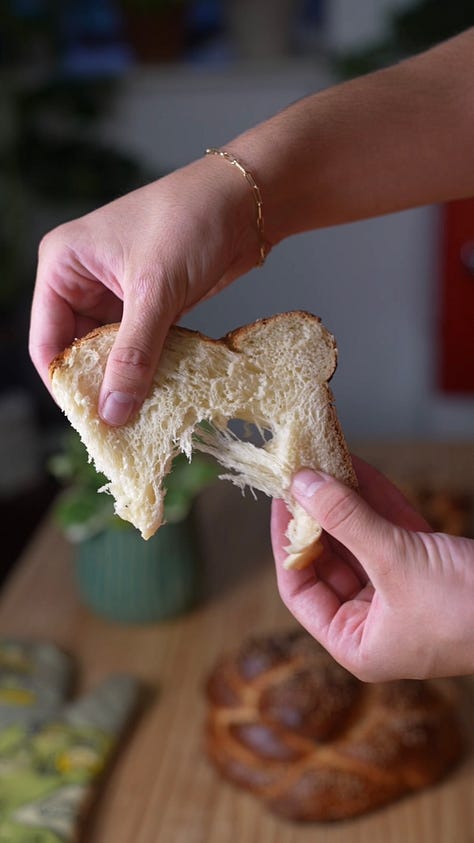how to make the best challah ever
I share my Grandma Karen’s best challah recipe here — tender and subtly sweet, with tips and video guides for shaping both round high-holiday loaves and traditional braids.
This post will cover:
Dough making with or without a mixer
Rising overnight or same-day options
Round or long braiding methods



Challah is a tender and subtly sweet egg bread made traditionally on Fridays for Shabbat. An authentic challah recipe should make two loaves and be dairy-free. In more observant homes, there is also the custom of setting a small piece of dough aside as an offering. A traditional challah recipe yields enough for two loaves so one can be eaten Friday night and the second on Saturday, when work is traditionally avoided. This is great if you observe the day of rest, but you can also give the second loaf to a friend as I do. Challah is supposed to be dairy-free (despite many recipes calling for butter) because it is meant to be eaten with a kosher meat dinner. Using oil—not butter—also contributes to the bread’s characteristic moist texture. I do love to eat with butter though, which is not traditional but how I grew up! Of course, this recipe is also the perfect vessel for your French toast.
My grandma is the original recipe developer in my family. She prints out every recipe she wants to make and organizes them into big binders. She is meticulous when she cooks and bakes, measuring even ingredients like salt with precision. What I love most are the notes she scribbles in the margins: “double recipe for Thanksgiving” or “don’t freeze unbaked — didn’t rise fully.” Reading them feels like baking alongside her, watching her process of trial and error unfold on the page.
Her recipes don’t always follow convention. Ingredients appear in the order they’re used rather than neatly at the top, and the directions are written for her own kitchen — her mixer, her oven, her microwave. Who cares if it makes sense to anyone else? Over time, her pages accumulate layers of edits, like a palimpsest: pencil and ink in different shades, measurements crossed out, substitutions tested. Only after many rounds of tinkering will she finally stamp a recipe as “Karen’s Best.”
The challah recipe I’ve now made at least a hundred times is one of those: “Karen’s Best.” I hope you enjoy making it as much as I do.
[This is not the final recipe — the full recipe with grams is below.]
Video guides: The first video shows the whole dough process and braiding for a round loaf. The second video shows how my grandma braids a traditional loaf.


